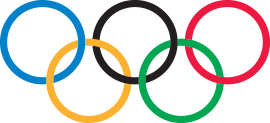Agency calls on athletes, entourage and all stakeholders to note major modifications concerning the use of salbutamol and injectable glucocorticoids
The World Anti-Doping Agency (WADA) is pleased to publish the 2022 List of Prohibited Substances and Methods (List); the 2022 Summary of Major Modifications and Explanatory Notes; and the 2022 Monitoring Program. The 2022 List was approved by WADA’s Executive Committee (ExCo) during its meeting on 14 September 2021 and comes into force on 1 January 2022.
The List is one of the eight International Standards that are mandatory for all Signatories of the World Anti-Doping Code (Code). It designates what substances and methods are prohibited both in- and out-of-competition and which substances are banned in particular sports.
WADA Director General Olivier Niggli said: “Every year, WADA leads an extensive consultation process concerning the Prohibited List, which involves some of the most qualified experts in the fields of science and medicine from around the world. This allows WADA to review the latest trends and scientific research to ensure that any new or existing substance or method that may meet the criteria for addition to the List are considered in a timely manner so as to protect athlete health and maintain a level playing field for all.”
“As usual, we encourage athletes, their entourage and all stakeholders to acquaint themselves with the Summary of Major Modifications to avoid inadvertent use of substances and methods that are prohibited in sport for 2022. In particular, we kindly ask all Anti-Doping Organizations around the world to share the List and its related documents with athletes, their entourage and other relevant stakeholders under their jurisdiction to highlight the important updates to the permitted usage of salbutamol and glucocorticoids in 2022.”
Major Modifications
As outlined in the 2022 Summary of Major Modifications and Explanatory Notes, the Major Modifications for 2022 include the following:
- S9. Glucocorticoids
The draft 2021 List, which was considered by WADA’s ExCo during its September 2020 meeting, proposed prohibiting all injectable routes of administration of glucocorticoids in-competition. While this modification was approved, the ExCo asked WADA Management to implement the prohibition only as of 1 January 2022, to allow enough time for stakeholders to learn and adapt to this change.
Therefore, all injectable routes of administration will now be prohibited for glucocorticoids during the in-competition period. Examples of injectable routes of administration include: intravenous, intramuscular, periarticular, intra-articular, peritendinous, intratendinous, epidural, intrathecal, intrabursal, intralesional (e.g. intrakeloid), intradermal, and subcutaneous.
For clarification: oral administration of glucocorticoids, which remains prohibited in-competition, includes, in particular, oromucosal, buccal, gingival and sublingual routes.
Other routes of administration (including inhaled and topical: dental-intracanal, dermal, intranasal, ophthalmological and perianal) are not prohibited when used within the manufacturer’s licensed doses and therapeutic indications.
It is strongly recommended that athletes follow the minimum washout periods, expressed from the time of administration to the start of the in-competition period. These washout periods, which are highlighted in the Summary of Major Modifications and Explanatory Note, are based on the use of these medications according to the maximum manufacturer’s licensed doses.
If there is a legitimate medical need for the use of a glucocorticoid, the athlete may apply for a Therapeutic Use Exemption (TUE). In case of an AAF in-competition, the athlete may apply for a retroactive TUE as provided for in the applicable rules.
For further information regarding WADA’s approach to the routes of administration of glucocorticoids and washout periods, please refer to the Summary of Major Modifications and Explanatory Note.
- S3. Beta-2 Agonists – Dosage of Salbutamol
Regarding salbutamol, the daily dosing time intervals are modified to 600 micrograms over eight hours starting from the time any dose is taken (previously 800 micrograms over 12 hours). This is to reduce the risk of any potential AAF arising after high doses are taken at once. The total permitted daily dose remains at 1,600 micrograms over 24 hours. A TUE should be sought for doses in excess of these limits.
For further information on the permitted dosage of salbutamol, please refer to the Summary of Major Modifications and Explanatory Note.
- S0. Non-approved Substances
For the first time, a substance has been included by name as an example in section S0 (Non-approved Substances) of the List. This substance, BPC-157, is an experimental peptide sold as a supplement, and it has been included in the 2022 List following a recent re-evaluation of its status.
Annual List Review Process
Every year, WADA leads the revision process concerning the List, beginning with an initial meeting in January and concluding with the publication of the List by 1 October. This is an extensive consultation process that includes WADA’s List Expert Advisory Group gathering information including the latest scientific and medical research, trends, and intelligence gathered from law enforcement and pharmaceutical companies; circulating a draft List among stakeholders; and, taking their submissions into consideration to revise the draft, followed by review by the Agency’s Health, Medical and Research (HMR) Committee. The HMR Committee then makes its recommendations to WADA’s ExCo, which approves the List during its September meeting.
For a substance or method to be added to the List, it must be determined that it meets at least two of the following three criteria:
- It has the potential to enhance or enhances sport performance
- It represents an actual or potential health risk to the athletes
- It violates the spirit of sport
The List is released three months ahead of it taking effect so that athletes, their entourage and other stakeholders can acquaint themselves with any modifications. Ultimately, athletes are responsible for prohibited substances found in their body and prohibited methods found to have been used. Athlete entourage are also liable for Anti-Doping Rule Violations if determined to be complicit. Consequently, if there is any doubt as to the status of a substance or method, it is important that they contact their respective Anti-Doping Organizations (International Federation or National Anti-Doping Organization) for advice.
The TUE Program
It should be noted that for athletes who have a legitimate medical reason for using a prohibited substance or method that is on the List, they can apply for a TUE to determine whether they meet the criteria outlined in the International Standard for Therapeutic Use Exemptions (ISTUE). The TUE Program is a rigorous and necessary part of elite sport which has overwhelming acceptance from athletes, physicians and anti-doping stakeholders.
TUE guidance documents including new regulations on glucocorticoids
In order to assist physicians and athletes, WADA will update and publish shortly, on its website, the following guidance documents on managing TUEs to include the new regulations on glucocorticoids:
- General document on glucocorticoids and TUEs (to be available mid-October 2021)
- Checklists on a number of medical conditions for which glucocorticoids may be used (to be available early November 2021)
- TUE Physician Guidelines for TUE Committees on how to evaluate TUE requests for glucocorticoids for different medical conditions (to be available early November 2021)
Educational resources
In addition to the guidance documents listed above, WADA has provided, or will provide, a number of educational resources as part of its Code Implementation Support Program (CISP), which can be accessed on the Agency’s Anti-Doping Education and Learning Platform (ADEL). These resources include:
- A CISP Checklist – Implementing Revised List (available now)
- Athlete and Athlete Support Personnel (ASP) Factsheet on Glucocorticoids (to be available in October)
- Medical Professionals Factsheet on Glucocorticoids (to be available in the coming weeks)
- Athlete and ASP Guide to the 2022 List (to be available from 1 January 2022)
Upcoming Webinar
In order to further assist stakeholders in their understanding and implementation of the 2022 List, WADA will host a webinar in November 2021. Participants will be taken through the major modifications for 2022 by WADA’s List Expert Advisory Group. WADA will communicate more details in the coming weeks regarding its November webinar schedule
Languages and Formats
The 2022 Prohibited List; the 2022 Summary of Modifications and Explanatory Notes; and the 2022 Monitoring Program are available for download on WADA’s website in English and French with Spanish to follow in the coming weeks.
Stakeholders wishing to translate the List into other languages are kindly asked to signal their interest to [email protected]. WADA will then provide the necessary files and, once the translation is finalized, will make the translated List available on the Agency’s website.
The List’s mobile-friendly digital edition will go live on 1 January 2022.
Source: https://www.wada-ama.org/


